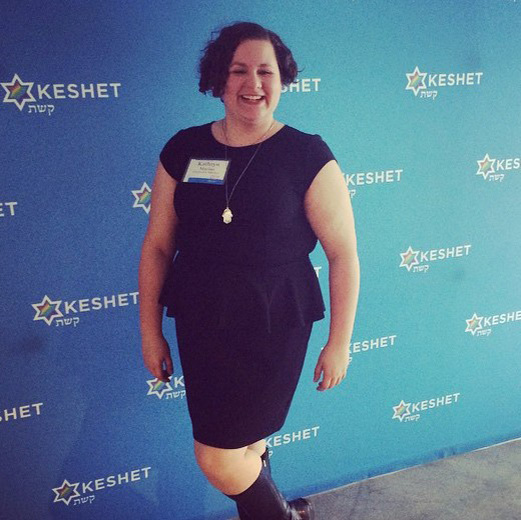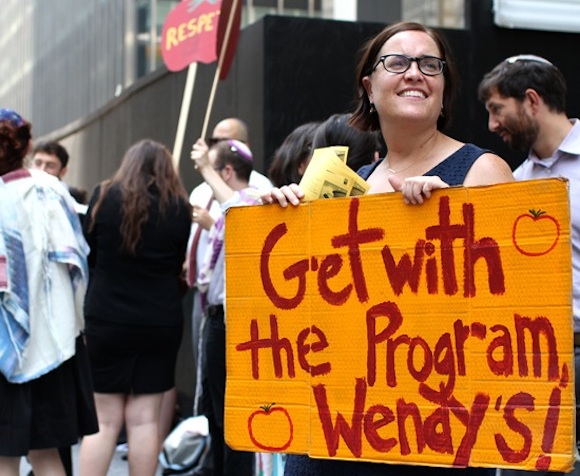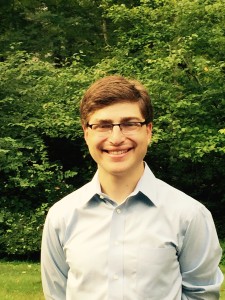This piece by Rabbi Joshua Rabin (an alum of JOIN for Justice’s Seminary Leadership Project) was originally published on eJewish Philantrhopy.

(Photo source: pixabay)
I love going to the gym. Each day, I take an hour to get my heart pumping and my body sweaty to ensure that I approach my work with energy, focus, and zeal. And when I go to the gym, one of the things I am thankful for is that I always have a machine to use, primarily because the majority of the members at my gym never show up! This is not an isolated phenomenon. The marketing research firm Statistic Brain found that while the health club industry generates $21 billion in revenue each year, almost 67% of gym memberships in the United States are never used.
This is a brilliant business model, best captured in an episode of National Public Radio’s Planet Money called The Planet Money Workout. Stacey Vanek Smith states that most gym members are “customers who pay, but don’t cost the business a dime.” If a typical fitness center actually needed to accommodate the number of members who pay dues, there would be a line out the door to use any machine.
A typical synagogue uses a business model almost identical to a health club, where a large number of congregants who use little to no synagogue services pay the membership dues that make up the bulk of the operating budget. Of course, there is nothing wrong with paying membership dues to something that one does not use, as many people want a synagogue to be available to them in the limited moments when they need it. Furthermore, every professional and lay leader I know wants more people to walk into the synagogue and would bristle at the idea that synagogues intend to keep out minimally engaged members. However, as the Pew Forum’s Portrait of American Jews finds that only31% of American Jews belong to a synagogue, it is safe to say that the days of sustaining synagogues where people pay not to use them are numbered at best, and over at worst.
Yet underneath every challenge is an opportunity. I am far from the first person to compare synagogue membership to health club membership, yet this metaphor only matters if it can point us to new imagery that will guide synagogues on a journey toward thriving. The synagogue of the twentieth-century was designed to be a club, a place where membership itself was a form of participation. But at a time when all membership organizations face dwindling numbers, a thriving synagogue in the twenty-first century must be a cause, a place where people invest their time, energy and money because the purpose and mission of that synagogue compels them to engage. This distinction between club and cause manifests itself in three ways:
1. A Club is Owned by the Members, a Cause by the Mission
I visit countless synagogues, and I am waiting to visit the synagogue whose website says that the community is cold, unwelcoming, uncaring, and hostile to the needs of children and families. However, while most synagogues use similar aspirational words to describe their community, there is a tremendous gap between the synagogue as it is and the synagogue as it should be. If the synagogue wants to be a club, then the community as it is works fine, so long as people continue to join. Yet if synagogues want to be true to Dan Hotchkiss’ charge that the “owner” of the congregation is the mission, then a synagogue’s “bottom line” is “the degree to which its mission is achieved.” Clarifying what that mission should be, and thinking about a strategy to transform the ideal into a reality, is critical to ensuring that the synagogue focuses on a cause worth pursuing.
2. A Club Aims for Output, a Cause for Impact
Even struggling synagogues have a great deal of activity, including programs, classes, life cycle events, guest speakers, minyanim, social action projects, and so on. However, a great deal of output from a synagogue does not mean that the synagogue makes a great deal of impact. Consider prayer. All synagogues offer some type of prayer experience, yet Jeffrey Jones reminds us that, “The real issue is whether or not worship offers an encounter with the holy, an opportunity to be touched by the transforming power of God” (Traveling Together: A Guide for Disciple Forming Congregations, 83). Unless prayer experiences are judged by the extent to which they help individuals grow their “passion created by an encounter with the holy” (Ibid.), then the prayer experience itself is simply a repetitive exercise of reciting words without meaning, promoting attendance without cultivating transcendence. By extension, a synagogue that wants to be a cause must think about the mark every aspect of synagogue life makes on individual Jews, the local community, and the world.
3. A Club Fills Roles, a Cause Uncovers a Person’s Gifts
Sefer Shemot tells us that every Israelite “who was moved and whose heart was willing” participated in the work of constructing the mishkan(Shemot 35:21), yet the Torah neglects to mention where a generation of previously enslaved Israelites learned how to perform these intricate and ornate tasks. In response, the Ramban argues that “none of the Israelites had ever learned these skills before … But each one discovered his natural talent or aptitude for the task” (Ramban on Shemot 35:21). Even though God commanded the Israelites to perform a seemingly impossible task, the sanctity of the task itself inspired the Israelites to uncover gifts they never knew they possessed.
While many current synagogue leaders are dying to know who will chair next year’s Purim Carnival, New Members Dinner, or Annual Campaign, unengaged and under-engaged Jews seeking a spiritual home do not want to be another name in an organization’s bureaucracy; the volunteer work needs to emerge from a person’s spiritual gifts. Every task performed in the synagogue, from serving as gabbai to stuffing envelopes, has the chance to be endowed with holiness. Yet if the tasks are framed as a to-do list that someone must perform, synagogues will continue to lose people who see that work as completely disconnected from the formation of a meaningful Jewish life.
When I speak with synagogue leaders in my position at the United Synagogue of Conservative Judaism (USCJ), I am oftentimes asked about what synagogues can do to ensure that next-generation Jews will one day join synagogues. While the question itself is far too complex for casual conversation, my answer on one foot is that twenty-first century Jews demand that the synagogue serve a cause, but the synagogue’smere existence is not a cause. This subtle difference in purpose is a tectonic shift in the criteria by which synagogues are judged, yet this shift has the power to the sow the seeds of a new synagogue renaissance. May it happen soon, and speedily in our days.
Rabbi Joshua Rabin is the Director of Kehilla Enrichment at the United Synagogue of Conservative Judaism, and is the Program Director of the USCJ Convention. You can read more of his writings atwww.joshuarabin.com.



 (Pictured: Kat Macias)
(Pictured: Kat Macias)




